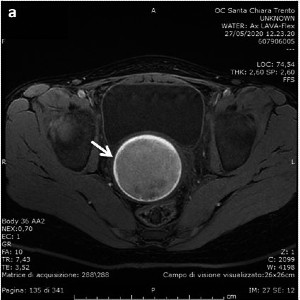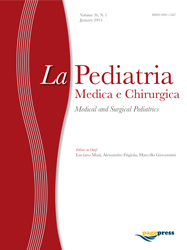Two-balloon epistaxis catheter to ensure vaginal patency in a complex case of vaginoplasty for vaginal agenesis: a case report

All claims expressed in this article are solely those of the authors and do not necessarily represent those of their affiliated organizations, or those of the publisher, the editors and the reviewers. Any product that may be evaluated in this article or claim that may be made by its manufacturer is not guaranteed or endorsed by the publisher.
Authors
Congenital vaginal atresia is a rare anomaly of the female genital tract. Many vaginoplasty procedures have been described, but the postoperative risk of vaginal stenosis remains a challenge. We report a case of isolated distal vaginal agenesis in a patient with neurological impairment where the use of an “alternative” dilator was needed. An 11-year-old girl with Down syndrome was admitted to the Emergency Department complaining of pelvic pain. The clinical evaluation showed a hard and painful pelvic mass associated with an imperforate hymen. Abdominal ultrasound and pelvic MRI were suggestive for hematometrocolpos and absence of the lower third segment of the vagina. Vaginoscopy confirmed the diagnosis of congenital vaginal agenesis. The patient then underwent a laparoscopic-assisted vaginoplasty. Considering the difficult management of the postoperative period, an epistaxis catheter was used as a vaginal stent and dilator. The use of an epistaxis catheter to provide adequate vaginal patency after vaginoplasty can be an alternative solution especially in those cases where calibrations with dilators are difficult or not tolerated.
How to Cite

This work is licensed under a Creative Commons Attribution-NonCommercial 4.0 International License.
PAGEPress has chosen to apply the Creative Commons Attribution NonCommercial 4.0 International License (CC BY-NC 4.0) to all manuscripts to be published.






